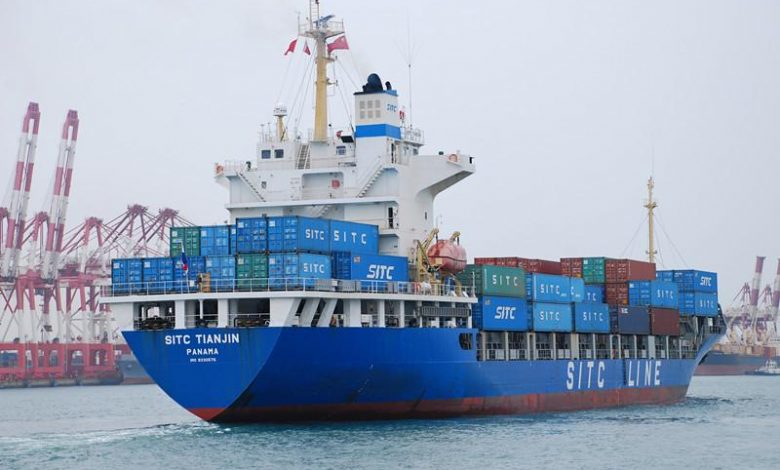Used to building big, liner operators must be prepared think small

The IMO 2020 sulphur regulation has been an effective brake on new orders for larger vessels, writes Daniel Richards from Maritime Strategies International.
The larger European, Chinese and Japanese liner companies showed remarkable restraint in staying away from the shipyards in 2018, at least as far as ordering of big ships goes. This restraint has a few different drivers, some of which will prove to be more durable than others.
First amongst these is the sea of red ink which washed across the balance sheets of most liner companies in the first half of 2018, serving as a deterrent against major capital expenditure without some form of wider state or group company backing. Whilst most liner companies made their way back to profitability in Q3, freight markets remain febrile and challenged by the unresolved US-China trade conflict – an environment scarcely conducive to large scale ordering.
Heightening the issues around cashflows is the investment that many liner companies are making in scrubbers. Whilst the quantum of the investment per vessel is relatively low (between $2m-10m depending on the vessel, but typically less than 10% of the newbuilding price), the key point is that this investment will often have to be financed from the company balance sheet rather than by asset-backed debt, at least unless or until the finance community can overcome the particular challenges of financing these systems.
As a result, even though in total the investment is relatively marginal, the actual immediate call on a liner company’s liquidity is nearly equivalent to the first down payment on a new vessel.
Another consequence of IMO 2020 has been to heighten the air of uncertainty around the liner industry, with perceptions of the optimal route to compliance unclear and, given the recent flurry of activity around scrubbers, subject to change. One thing it certainly will be is expensive. Hapag-Lloyd has estimated the total cost of compliance industry-wide will be $65bn per annum, a sum of money the liner industry can scarcely afford.
To take a simple example, Hapag-Lloyd estimates the cost to its own operations will be approximately $1bn per annum based on a conservative bunker price spread assumption of $250/tonne. That $1bn is equivalent to an order of a 10-ship string of 11,000 teu vessels, and given the industry’s patchy record in passing cost increases on to its clients, a degree of caution around additional capital expenditure is entirely understandable. Coupled with major transformation projects underway at Maersk, Cosco and ONE a degree of circumspection is equally unsurprising.
These dynamics have led MSI to reduce our contracting forecast markedly. Our 2018 forecast has been edged up to reflect the speculative order from Eastern Pacific which we had not anticipated, but we now believe 2019 will represent the fourth lowest level of ordering over the past 15 years (with the three lower totals representing 2009, 2012 and 2016, all of which were – in their various ways – dire years for the container shipping industry).
From a purely financial perspective we do not expect 2019 to be similarly grim, although potential for disruption means that it certainly has the capacity to be as memorable.
So, if the biggest ships crowd out balance sheets and seem a risky proposal in uncertain times, is further newbuild contracting off the table? We think not.
Another feature of our contracting forecast is the resurgence of small ships. The small ship sector has seen structural underinvestment over recent years, with predictable consequences.
The old fleet is expected to significantly step up over the coming years as the wave of investment in 2003-2007 hits 15 years old. Compounding this is the fact that many of the vessels built in 2003-2007 were optimised for high speeds – in fact vessels built in 2005-2007 represent some of the least fuel-efficient vessels in the fleet. And fuel efficiency, of course, is at the front of the operators’ minds across the industry.
Liner companies are of course aware of this, and in part this lies behind the significant orders for regional operators such as SITC, China Navigation and KMTC as well as for Yang Ming and, if rumours are to be believed, an impending order from Maersk.
This dynamic underpins our anticipation of a significant uptick in contracting for sub-3,900 TEU vessels in coming years and a significant share of older tonnage being utilised in the feeder fleets of some regional (and not so regional) operators.
This dynamic also underpins MSI’s view of vessel demolition going forward. Whilst overall we expect demolition volumes to increase, and indeed the share of feeder tonnage scrapped as a proportion of the total containership demolition market to remain fairly steady, the percentage of feeder vessels scrapped as a proportion of total feeder scrapping candidates is on a downward trend.
In other words, liner companies will find themselves less able to scrap older feeder vessels simply because sourcing quality replacement tonnage on the charter market will prove more difficult. As securing fuel-efficient feeders becomes of increasing importance, filling the gap with their own orderbooks will be the obvious solution.
